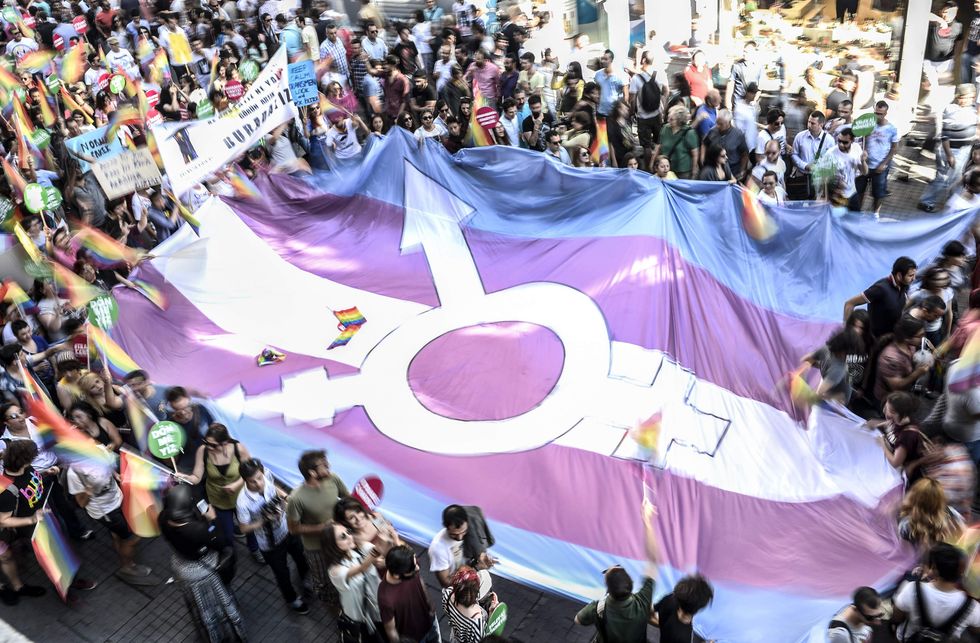
Scientific researchers recently discovered that more than 20 percent of the human genome is made up of genes specific to either males or females. (Bulent Kilic/AFP/Getty Images)

Just a few decades ago, people believed, as is the scientific consensus, that among humans there are only two genders: male and female.
In 2017, however, progressives argue there are dozens of human genders, including being gender-less or even "gender-fluid," meaning a person's gender changes periodically based on how he feels. They argue that gender isn't tied to scientific study and research but instead to how someone "identifies."
But a recent scientific study conducted by the Weizmann Institute of Science is tearing holes into the progressive narrative that sex and gender aren't tied to science.
The study found that there are more than 6,500 unique genes in the human genome that express different traits depending on a person's gender, either male or female, which explains the huge biological differences between men and women.
That means more than 21 percent of the entire human genome, which is composed of about 30,000 genes, code for gender-specific traits.
"Weizmann Institute of Science researchers recently uncovered thousands of human genes that are expressed — copied out to make proteins — differently in the two sexes," according to Weizmann.
Two scientists from the institute's Molecular Genetics Department — professor Shmuel Pietrokovski and Dr. Moran Gershoni — "looked closely at around 20,000 protein-coding genes, sorting them by sex and searching for differences in expression in each tissue. They eventually identified around 6,500 genes with activity that was biased toward one sex or the other in at least one tissue," the institute reported.
"For example, they found genes that were highly expressed in the skin of men relative to that in women’s skin, and they realized that these were related to the growth of body hair. Gene expression for muscle building was higher in men; that for fat storage was higher in women," the report explained.
The researchers also discovered that harmful sex-specific genes, such as those that make a person infertile, are less likely to be "weeded out" of the gene pool — especially in men.
"The more a gene was specific to one sex, the less selection we saw on the gene. And one more difference: This selection was even weaker with men," Gershoni said.
More from the Weizmann:
Aside from the sexual organs, the researchers discovered quite a few sex-linked genes in the mammary glands — not so surprising, except that about half of these genes were expressed in men. Because men have fully fitted but basically nonfunctional mammary equipment, the scientists made an educated guess that some of these genes might suppress lactation.Less obvious locations included genes that were found to be expressed only in the left ventricle of the heart in women. One of these genes, which is also related to calcium uptake, showed very high expression levels in younger women that sharply decreased with age; the scientists think that they are active in women up to menopause, protecting their hearts, but leading to heart disease and osteoporosis in later years when the gene expression is shut down.
Yet another gene that was mainly expressed in women was active in the brain, and though its exact function is unknown, the scientists think it may protect the neurons from Parkinson’s – a disease that has a higher prevalence and earlier onset in men. The researchers also identified gene expression in the liver in women that regulates drug metabolism, providing molecular evidence for the known difference in drug processing between women and men.
In the end, Pietrokovski said his research proves the genetic differences between men and women and why evolution between men and women should be seen as "co-evolution."
"Paradoxically, sex-linked genes are those in which harmful mutations are more likely to be passed down, including those that impair fertility. From this vantage point, men and women undergo different selection pressures and, at least to some extent, human evolution should be viewed as co-evolution," Pietrokovski said.
However, the study did not conclude that there are more than two human genders.